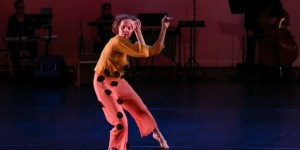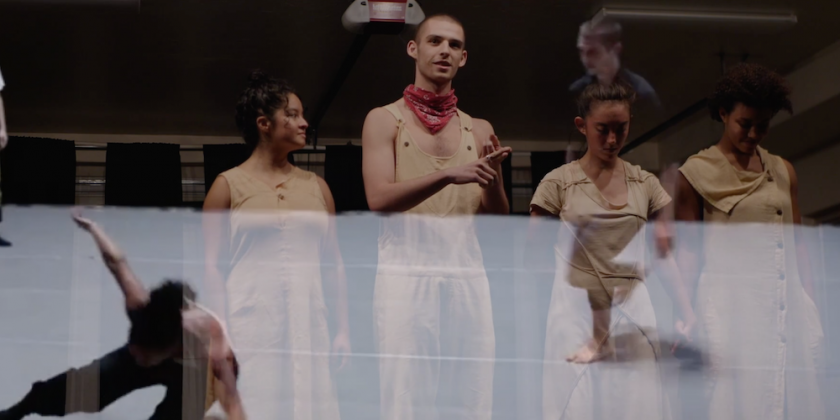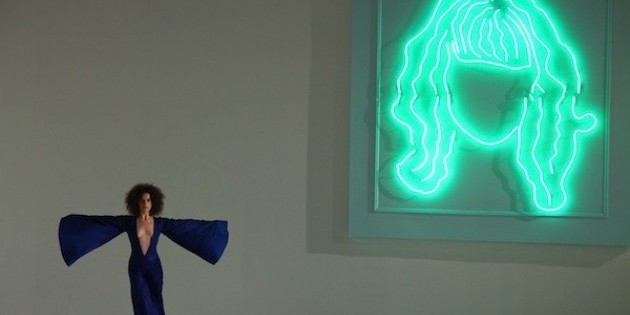IMPRESSIONS: Performa 2011 (The 3rd and Final Episode)

OR, I'd Like Some Risk With My Cotton Candy, Please
IMPRESSIONS: Performa 2011- Part 3
Brittany Beyer for The Dance Enthusiast
For Part 1 of Performa 2011, click here
For Part 2 of Performa 2011, click here
COCKAIGNE
November 18
Prince George Ballroom
Conceived, Designed and Directed by Will Cotton
Composers: Caleb Burhans and John Zorn
Choreographers: Ruby Valentine and Charles Askegard Dancers: Ruby Valentine, Savanah Lowery, Georgina Pazcoguin, Ana Sofia Scheller
Whipped Cream: Hannah Cohen (carrying a Fragrance with three names mentioned)
Curated by Stacy Engman for Performa
I’ll Raise You One... 7 Day Strip Poker Game
November 19th
Art in General Gallery
by Jefrey Throwell
A New Commissions project by Art in General in conjunction with Performa 11
Instruction Construction
November 19th
by robbinschilds
Art in General 6th floor gallery
Brittany Beyer for The Dance Enthusiast
As I viewed events in the last week of Performa 11, I started to hear rumblings from the dancer clan that the biennial was missing the “artistic” mark. With the overwhelming amount of things to see for Performa, I had purposefully picked more dance/performance based items to attend. This seemed to insulate me from some of the “bad” stuff. However, there is no way to ignore it: there is a difference between how visual arts based (coming from more classic visual art forms) and performance based (dance and theater) creators look at the uncharted territory of contemporary performance art. I encourage everyone to read Andy Horwitz’s blog post on this issue at Culturebot.
Beyond the visual / performative art schism, I walked away from seeing three performances thinking about the idea of risk and what that means in different contexts.
Risk is a good thing when it means going past a precipice to create something new; but taking risks, as you will see, also opens you up to experiences that have less than desired outcomes.
Will Cotton’s creation, COCKAIGNE, is as much a fictitious performance as the title means “a fictitious place.” It is obvious that Cotton pitched an idea to his curator friend who facilitated the connection to Performa, and it is also clear that he had a great deal of funding (personal or otherwise) to pull this off.
Cotton is a visual artist comfortable on canvas, with photographs, and other mediums including set design for Katy Perry’s videos. He is used to creating hype
around a project and inviting powerful contributors into his midst. This includes one of COCKAIGNE’s named collaborators, IFF Fragrances. But it seems he is unfamiliar with the workings of dance and musical rehearsals; and with creating a performance space that serves his contributing artists well; and with executing an artistic presentation that is time-based rather than centered around anobject that exists as a tradable commodity. His is a world of champagne and cotton candy, where beautiful girls who are called “whipped cream”spray mood-inducing fragrances.All this happens as Getty Images photographers work the room making the audiencefeel excited to be there ( orthat they should be excited.)
The actual performance, for me, was the champagne and cotton candy hour before the “official” show.The people jockeying to be in front of the cameras, aligned conveniently next to someone important, and performing cheeky antics with their free party fare were entertaining. The ambiance died when the lights went down for the actual event.
Cotton has an amazing array of artistic devices at his fingertips: from a burlesque dancer to soloists from the New York City Ballet; from world-class composers to their musical counterparts in the dance world. Used in a different manner, all this could have been quite fantastic.But what we were left with was an attempt to push a cotton candy backdrop into the realm of theater, and it was not enough.
Because this was Will Cotton’s creation, I reserve any criticism of those performing the piece. They did what performers do; they did their job and performed valiantly.
“Risk” here was clear: try something new thinking that your mastery of one art form means you can go into another. This is possible, but obviously not all attempts will create masterpieces.
As I walk onto the street where Art in General is housed, I notice a crowd standing around the gallery. It is all men-- and they are not budging. They are fixed on the activity going on inside the small raised space that is exposed to the street. This is I’ll Raise You One, the easily provocative performance art piece in which people (men and women) play strip poker in full view of passersby. Zefery Throwell, who organized the naked protest in Wall Street titled, Ocularpation: Wall Street (foreshadowing the real social movement of Occupy Wall Street) brought the analogy back for a reboot: he asserts that participating in our economic system is akin to playing strip poker. Certainly, this fits the bill, since cunning and a lucky draw can net you everything, while a flip of the script can leave you with
nothing -- not even your socks.
.
nothing -- not even your socks.
.
The information provided by the gallery explains that the performance “establishes a world of absurdity and purposelessness, allowing the casual onlooker to participate in a guilt-free voyeurism, while teasing out a different outlook on our personal interactions and day-to-day routines.” However, voyeurism did not disappear on the side of the audience, and I saw a rather pointed display by a poker game participant to try to deal with this fact.One onlooker was so invasive -- even through the glass -- that the poker player’s attempt to single him out and thrust discomfort back onto him didn’t work.
The analogy of our current economic and social system as a game of strip poker works. Risk is involved.But writing in your artist statement that “you want to erase voyeurism,” does not mean that it will happen. I don’t know if “ogglers” can be forced to reflect or want to. The performers create their own coping mechanisms in this situation, just as we have to strategize our survival in this crazy economy.
This calls to another issue with creating performance art: how do you ready your performers for the moment you place them at risk?
In Art in General’s 6th floor gallery I found solace. robbinschild, the choreographic duo, Sonya Robbins and Layla Childs, create video, sculptural installation and performance work for many different spaces. For Performa, they created Instruction Construction, an audio-guided tour of the gallery exhibition. Contemporary performance art met purpose as robbinschild delivered an experience that was both personally engaging, and expertly curated. The gallery became more than just a space to hang art and the viewer became more than simply a passive spectator.
As the audio instructions ask us to hold two video monitors while sitting under a structure, or walk backward around half of the gallery, or climb piping structures (all while experiencing the works on the walls and the installation stationed around the rest of the gallery) I realize, “This is a personal playground.”
Out of six audio clips of instructions, the first four are guided gallery investigations with movement suggestions. The voice on the audio tour (I assume the tracks alternated between the voices of Sonya Robbins and Layla Childs) requests that you to line up alongside the pillars of the gallery and look down one side; or that, you lay against the wall and create a wall duet; or that you step up into the window and press your ear against the frosted glass to listen to the sounds outside. It is refreshing to be given permission to interact with a gallery exhibition—and to use our bodies instead of just our eyes. The last two tracks of the six were open improvisations, leaving much room for creating personal movement scores. The three -minute breaks given to produce “a dance” seem like an eternity. So, I take permission not to move. Switching to a compositional mind sent after being emerged in another world seems like too much of a leap.
There was only one other person enjoying the gallery space when I arrived. He seemed to be “a mover” just like me. Although we were having our own experiences, I could not help but name the whole gallery as the “place of performance” in my head. A fly on a wall would have certainly agreed. I wondered about how risky this kind of experience is for people who are not comfortable moving. We dancers forget that it is weird to feel an urge to leap in a grocery store.
As an artist who thinks that space choreographs our interactions, it was amazing to see how the gallery, usually a display center, became a place of performance. That is what Performa is about--transforming space, and maybe recognizing even being present is risky enough.
As Performa comes to an end, I am thankful to have taken the whole three -week journey. Each week was a different revelation: from the unexpected and humorously rigorous; to those long-time friends performing the marathon of artistic expression; to finally, reflecting on risk in contemporary performance art.
Performa is attempting to shed light on an artistic structure which has not been fully investigated on this level. Because it is a tricky area, with participants coming from every angle, a percentage of the work will miss the mark. This is only natural, and we should be able to create our own filters to create a positive experience.
Reconciling the differences between coming at creation from the visual art or performance mindset is necessary; so is educating the creators as to what works and what falls short. Creators need to consider what they ask of the performers, who valiantly work on ideas in real time. As Performa has created a platform for performance art, I hope academic and other circles will take this work more seriously, creating a places to perform and refining the aesthetics and philosophies unique to this genre.
Luckily, Performa does not disappear for two years. They publish books and partner with other organizations as they prepare for the next biennial. Until then, I will be refining my own eye and experiencing more art.



















